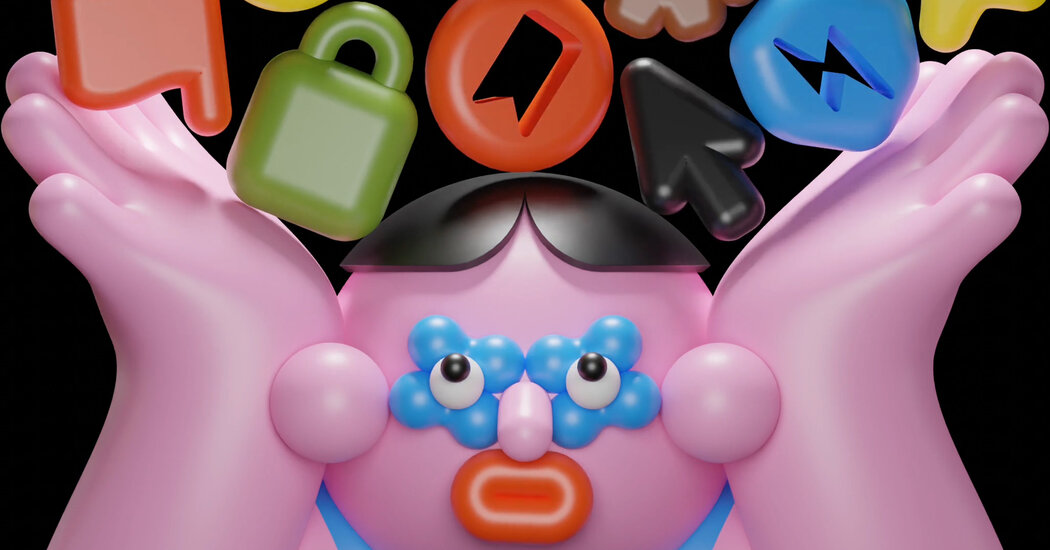
Why, then, do companies keep adding functions that are handy for a tiny number of people and ignored by the rest? And is there a better way to design products?
Cliff Kuang, a designer in the tech industry and an author of a book about the history of product design, singled out three culprits behind ever-growing features. First, companies add options because it helps them market their products as new and exciting. Second, products with many millions of users must appeal to people with widely different needs. And — this one stings — we are infatuated with options that seem great but that we can’t or won’t use.
Kuang described this third factor as the “the inability of users to distinguish between ‘Hey, that looks good’ and ‘Hey, I need that.’”
If it makes you feel better, Kuang said he’s guilty of this, too. He was wowed by a feature in his Tesla to automate parallel parking. “The first time I used it, it was cool,” he said. “And I never used it again.”
Technologists often grumble that they’re in a no-win situation in product design. Devoted fans demand more and more options that often make no sense for normals. (This phenomenon is often derided as “bloatware,” as in bloated software.) It is one reason technology often feels as if it’s made for the 1 percent of digital die-hards and not the rest of us.
But if companies try to pare back little-used options or change anything people have grown accustomed to, some users will hate it. Everyone has an opinion. Steven Sinofsky, a former Microsoft executive, used to joke that revising widely used software like Windows and Microsoft Office was like ordering pizza for a billion people.
In April, the technology writer Clive Thompson made a provocative suggestion to fight the temptation to stuff more features into existing technology: Just say no.
Thompson, who is a contributing writer for The New York Times Magazine, said that companies should decide in advance the set of features they want to work toward, and stop when they get there.
“Feature creep is a real thing and wrecks software every year,” he told me, citing Instagram as a product that he believes grows worse the more options it adds.
Products can’t stay frozen in the past, of course. And some features, like those to automatically notify emergency services after car crashes, could be worthwhile even if they’re infrequently used. It’s also unpredictable which add-ons might turn out to be useful for the masses.
Kuang said the best technology products change little by little to nudge users toward a future the creators have imagined. He said that Airbnb did that by evolving its website and app toward a significant recent change that prompts people to explore different types of homes without having a destination or travel dates in mind.
To get out of the bloatware trap, Kuang said, “you work backward from the future that you’re trying to create.”
Tip of the Week
How to prepare for changes to your phone
Whether all the features are useful or not, you soon will be using updated software for your phone. Brian X. Chen, the consumer technology columnist for The New York Times, tells us how to get ready for this change.
In this week’s column, I went over changes coming this fall to smartphones in the next operating system updates from Apple and Google.
How should you prepare? First, I advise against installing any early test version, or beta, of the software that’s available right now. Those unfinished versions of the operating systems are still being checked for flaws.
But here’s how you can get your phone ready for new operating systems when they’re finished:
-
Back up your phone data to another device, like your computer, or to a cloud storage service if you subscribe to one. That will prevent disaster in the unlikely event that something goes wrong when you update your phone software.
-
Turn off auto updates. In your phone settings, there is an option to automatically install software updates after bedtime. I advise having this be disabled. When the operating system arrives in the fall, take a wait-and-see approach to assess what others are saying online about any major bugs that might have cropped up. New products are usually imperfect on the first day. Manually install the new operating system when you are confident it won’t muck up your phone.
-
Take the opportunity to do some digital spring cleaning. Delete apps you no longer use and files you don’t need anymore. Occasionally, new operating systems take up more space than their predecessors, so it’s a good idea to do some purging ahead of time to ensure you get a fresh start.
Before we go …
-
A contested plan to reinvigorate U.S. chip-making: An unlikely group of billionaires, including a longtime Democratic donor and a Trump supporter, want $1 billion from Congress for a nonprofit investment fund to expand computer chip manufacturing in the United States. My colleague Ephrat Livni wrote that the group’s unusual proposal is divisive in Washington.
-
His TikTok posts claimed he was a juror in the recent trial of Johnny Depp and Amber Heard. He wasn’t, CNN explains, and it was another example of the often misogynistic online mania over the case.
-
Apps for kids are doing WHAT? A Washington Post columnist wrote that more than two-thirds of the top 1,000 apps for children are sending personal information to the advertising industry. (A subscription may be required.)
Hugs to this
Meet a goose named Duck-Duck and the man who became the goose’s adopted parent.




